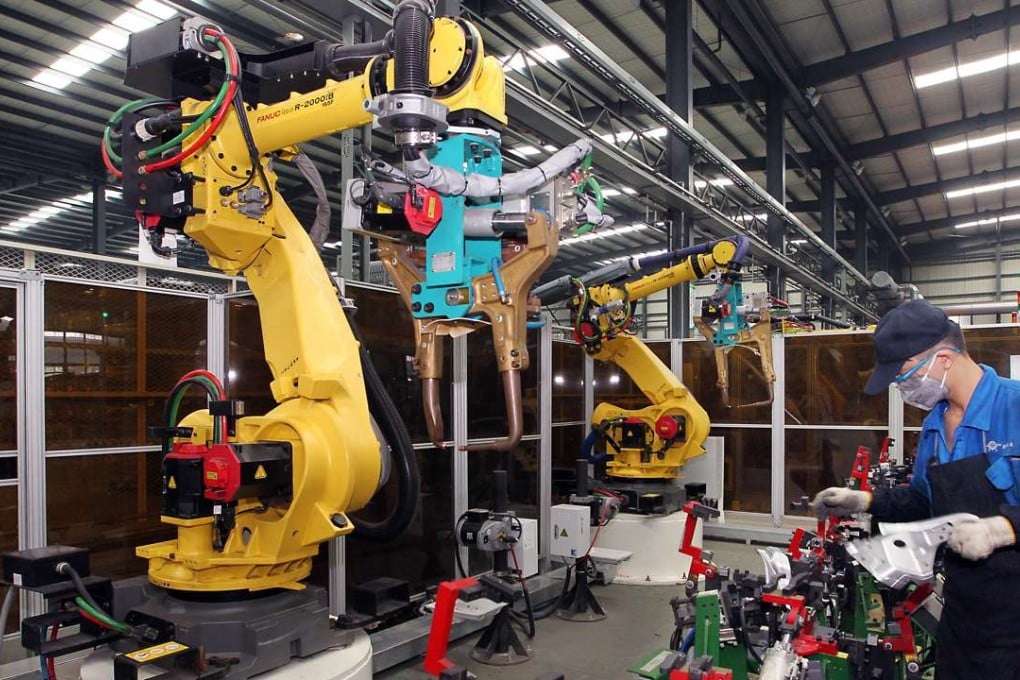Rise of the robots: 60,000 workers culled from just one factory as China’s struggling electronics hub turns to artificial intelligence
Kunshan, in Jiangsu province, undergoes makeover as 600 companies look to trim their headcount

The manufacturing hub for the electronics industry, Kunshan, in Jiangsu province, is seeking a drastic reduction in labour costs as it undergoes a makeover after an industrial explosion killed 146 people in 2014.
The county, one-seventh the size of neighbouring Shanghai and the mainland’s first county to achieve US$4,000 per capita income, was adjudged the best county for its economic performance by Forbes for seven years in a row.
However, the blaze, blamed on poor safety standards and haphazard industrialisation, dented Kunshan’s pride.
More than a year on, the county, which attracts much of its investment from Taiwan, is trying to reinvent its growth strategy. It is accelerating growth by replacing humans with robots and encouraging start-ups.
Thirty-five Taiwanese companies, including Apple’s supplier Foxconn, spent a total of 4 billion yuan (HK$4.74 billion) on artificial intelligence last year, according to the Kunshan government’s publicity department.